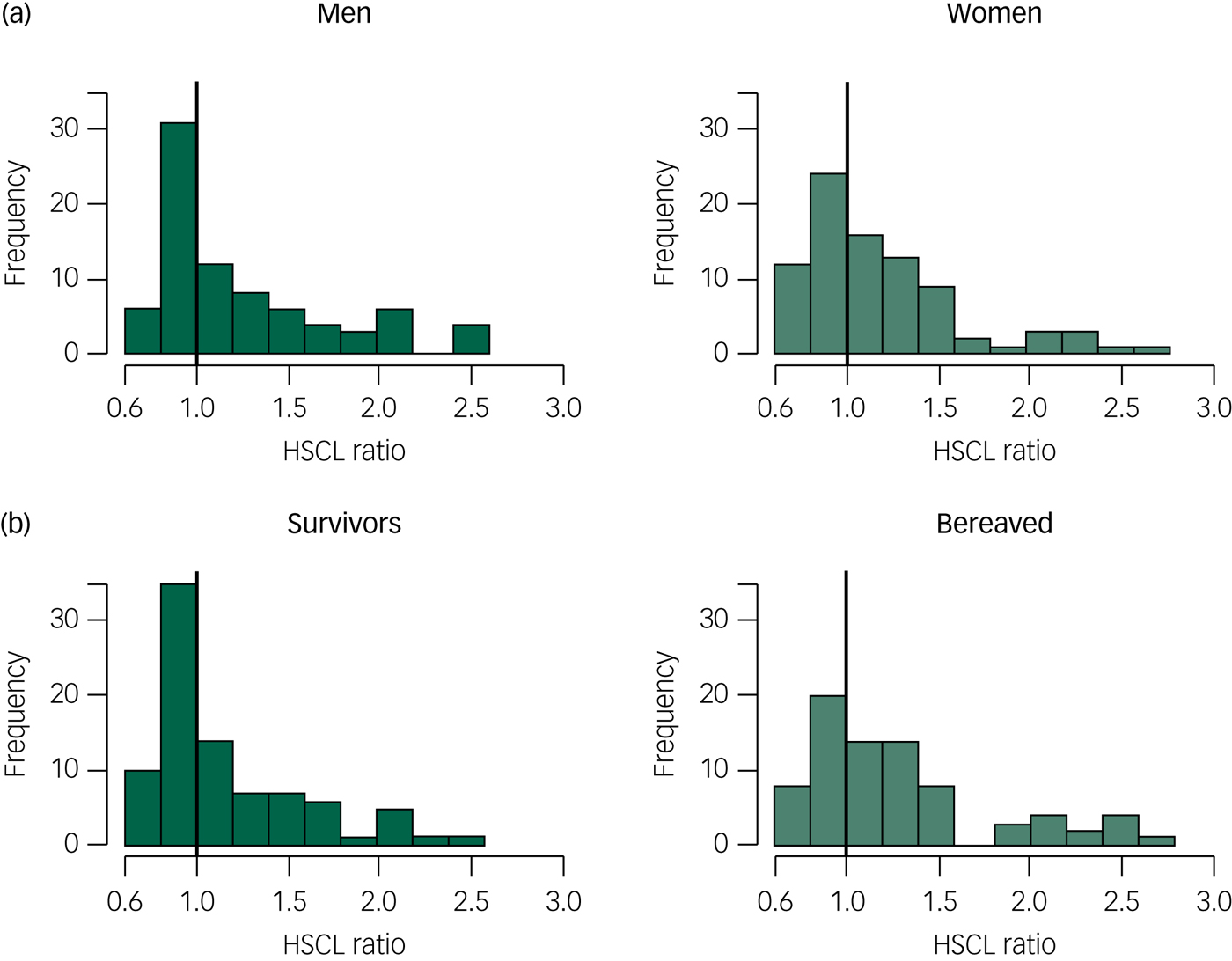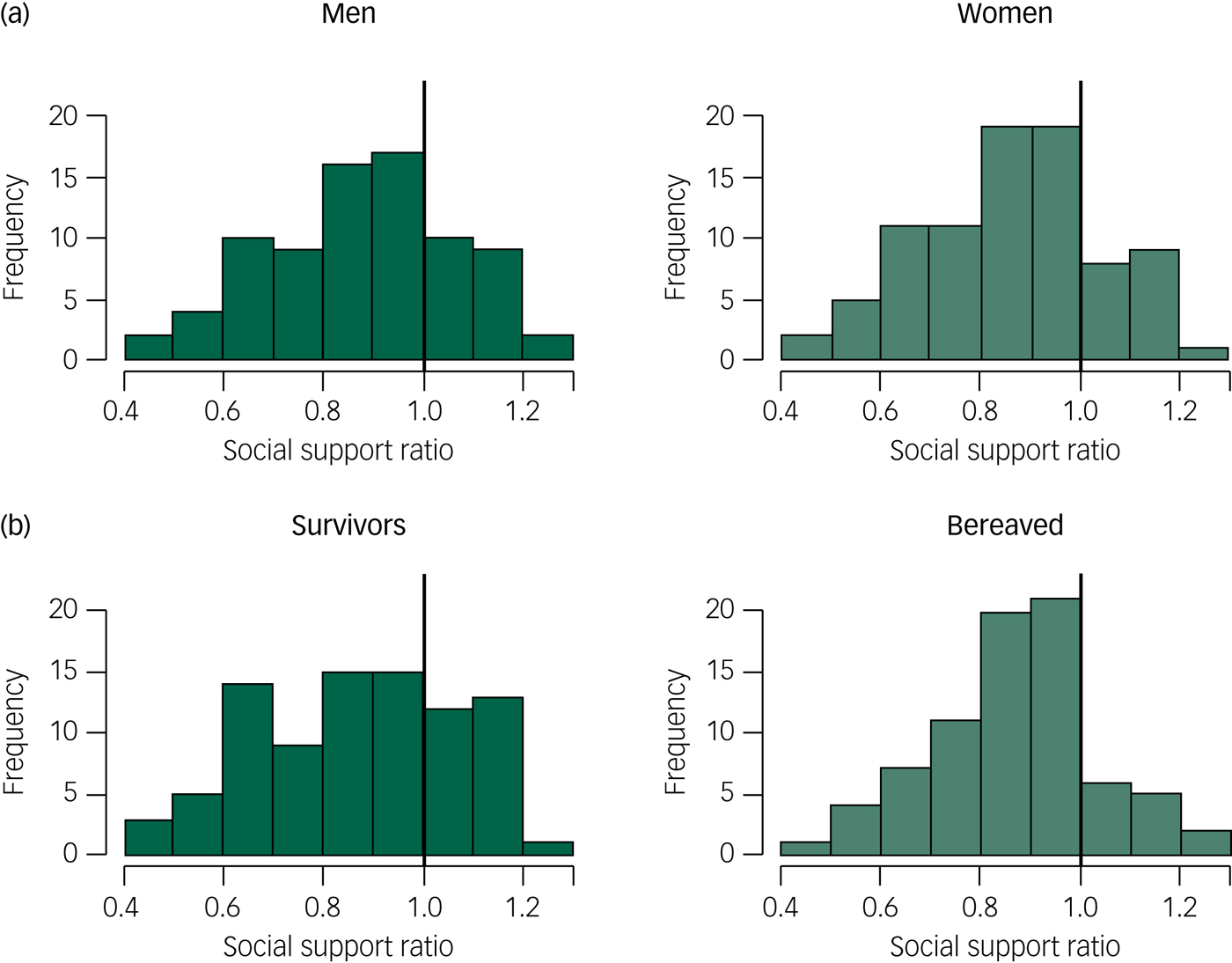This article was erroneously published with the wrong figures. The actual figures are below.

Fig. 1 Ratio between observed and expected anxiety/depression scores (HSCL) in men and women (a) and in the survivors and the bereaved (b).

Fig. 2 Ratio between observed and expected perceived social support in men and women (a) and in the survivors and the bereaved (b).





eLetters
No eLetters have been published for this article.